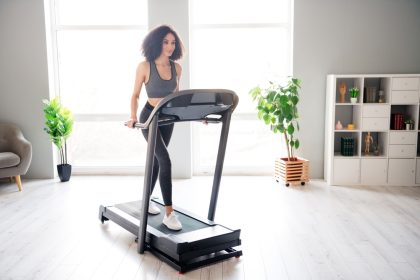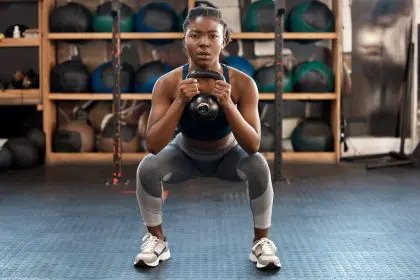You probably check your step count religiously, maybe glance at your heart rate during workouts, and might even pay attention to how many calories your fitness tracker claims you’ve burned. But there’s one feature sitting right there in your app that most people completely ignore, even though it might be the most powerful health indicator your wrist computer can provide.
Heart rate variability sounds like some complicated medical term that only cardiologists need to worry about, but it’s actually one of the most accessible and actionable pieces of health data you can get from your fitness tracker. The problem is that most people have no idea what it means or why they should care about those seemingly random numbers that show up in their health apps.
This isn’t just another fitness metric to obsess over – it’s a window into your nervous system, your stress levels, your recovery status, and even your overall health resilience. But somehow, it’s become the forgotten stepchild of fitness tracking, overshadowed by flashier metrics that are actually far less useful for optimizing your health.
The nervous system detective work happening on your wrist
Heart rate variability measures the tiny fluctuations in time between your heartbeats, which sounds boring until you realize what those fluctuations actually represent. Your heart isn’t supposed to beat like a metronome – healthy hearts have natural variations in their rhythm that reflect how well your autonomic nervous system is functioning.
When your parasympathetic nervous system (the rest-and-digest mode) is dominant, your heart rate variability tends to be higher, indicating that your body is in a good state for recovery and adaptation. When your sympathetic nervous system (fight-or-flight mode) takes over, your HRV typically drops, signaling that your body is under stress or not recovering well.
This makes HRV like having a personal stress detector that can catch problems before you’re consciously aware of them. Your HRV might drop days before you feel run down, giving you early warning that you need to ease up on training, get better sleep, or address whatever stressor is affecting your system.
The overtraining alarm system you’re ignoring
Most people push through workouts even when they’re feeling tired, assuming that consistency is more important than listening to their body. But HRV can tell you when pushing through is actually counterproductive, helping you avoid the overtraining trap that derails so many fitness goals.
When your HRV is consistently low or trending downward, it’s your body’s way of saying that it’s not ready for intense exercise. Training hard when your HRV is suppressed is like trying to make a withdrawal from an empty bank account – you’re just accumulating debt that you’ll have to pay back later with extended recovery time or injury.
Athletes who train based on HRV data often see better performance gains than those who follow rigid training schedules, because they’re working with their body’s natural rhythms rather than against them. This isn’t just elite athlete stuff – anyone can use HRV to optimize their workout timing and intensity.
The stress detector that works better than your feelings
Your conscious mind is notoriously bad at recognizing stress accumulation, but your HRV doesn’t lie. It can detect the physiological impact of work stress, relationship problems, poor sleep, or even dietary issues before they manifest as obvious symptoms.
Many people notice that their HRV drops during particularly stressful periods at work, even when they think they’re handling the pressure well. This early warning system can prompt you to implement stress management strategies before you reach the point of feeling overwhelmed or burned out.
The beauty of HRV is that it’s measuring your body’s actual response to stress rather than your perception of stress. Sometimes you might feel fine but your HRV tells a different story, revealing that your body is working harder than you realize to maintain normal function.
The sleep quality truth detector
Your HRV can reveal whether your sleep is actually restorative, even if you think you slept well. Poor sleep quality often shows up as suppressed HRV the next morning, giving you objective feedback about whether your sleep routine is working.
This is particularly useful for people who struggle with sleep issues but aren’t sure what’s helping and what isn’t. You might feel like you slept okay, but if your HRV is consistently low after certain sleep patterns, it suggests that your body isn’t getting the recovery it needs during the night.
HRV can also help you identify which sleep optimization strategies actually work for your body. Some people see HRV improvements with earlier bedtimes, others with temperature adjustments, and some with changes to their evening routine. The data helps you separate what actually works from what just feels like it should work.
The recovery timing that changes everything
Instead of following arbitrary rest day schedules, HRV can tell you when your body is actually ready for intense training again. This personalized approach to recovery timing can dramatically improve your training effectiveness while reducing injury risk.
Some people recover quickly and can handle frequent intense workouts, while others need more time between hard sessions. HRV helps you identify your personal recovery patterns rather than following generic advice that might not match your physiology.
This is especially valuable for people who are naturally competitive or have trouble taking rest days. When your HRV is high, you know you can push hard with confidence. When it’s low, you can rest without guilt, knowing that you’re making a smart decision based on objective data rather than just feeling lazy.
The lifestyle experiment feedback system
HRV can help you determine whether lifestyle changes are actually benefiting your health or just making you feel like you’re doing something good. Want to know if that new meditation app is working? Check your HRV trends. Curious about whether intermittent fasting suits your body? Your HRV will tell you.
This objective feedback can help you cut through the noise of conflicting health advice and focus on what actually works for your individual physiology. Some people see HRV improvements with cold showers, others with specific supplements, and some with dietary changes. The data helps you identify your personal health optimization strategies.
The key is making one change at a time and monitoring your HRV response over several weeks to see if there’s a consistent pattern. This turns health optimization into a systematic experiment rather than random trial and error.
The simple way to start using HRV effectively
Getting started with HRV doesn’t require becoming a data scientist or obsessing over every daily fluctuation. Most fitness trackers provide HRV data automatically, and many apps will give you simple traffic light systems – green means go hard, yellow means moderate activity, red means focus on recovery.
The most important thing is consistency in measurement. HRV is best measured first thing in the morning under similar conditions, which is why many people take a quick reading while still in bed. This gives you the most reliable baseline for tracking trends over time.
Focus on weekly trends rather than daily numbers, since HRV naturally fluctuates day to day. What matters is whether your average HRV is improving over time and whether you can correlate changes with your lifestyle choices, training load, and overall well-being.
Start by simply checking your HRV each morning and noting how it correlates with how you feel and perform. Over time, you’ll start to see patterns that can guide your training, recovery, and lifestyle decisions in ways that step counting never could.















